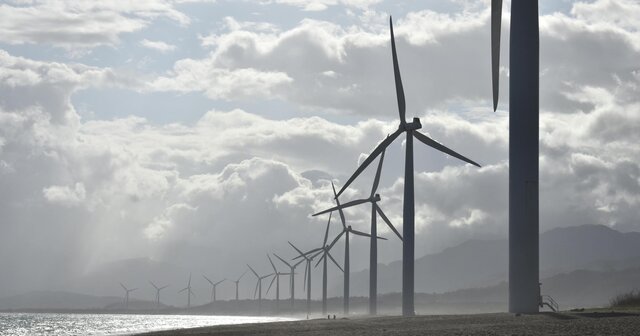
By
This article originally appeared in Fox News March 22, 2024.
Forget the "science is settled." With energy policy, settling on the best energy sources is more important.
Unfortunately, the debate over energy is dominated by agenda-driven outbursts and misleading statistics, from activists and governmental officials alike. That’s why we released a comprehensive report card that reviews every major energy source's benefits (and limitations).
We’re "grading the grid," so lawmakers and regulators don’t enact policies that are doomed to fail.
Our analysis, the first of its kind, takes a holistic look at America's eight most important energy sources: natural gas, wind, solar, nuclear, coal, petroleum, geothermal and hydroelectric.
Most analyses look only at one or two factors with each energy source – usually cost. By contrast, we look at five key factors: reliability, feasibility, technological innovation, environmental and human impact, and cost. We assigned a one to 10 score in each category, averaging them for a letter grade.
We conclude that natural gas is the best energy source – and the only one to get an A. Its reliability and feasibility are high because natural gas plants can be ramped up and down to meet changing demand and are easy to build.
At the same time, it gets a high grade for environmental and human impact, with ongoing innovation making natural gas cleaner with every passing year. And natural gas gets the highest grade for cost, because, when all associated costs are factored in, it’s our most affordable energy option.
What about coal and petroleum, the other traditional fossil fuels? They get, respectively, 80% and 70%. While it is reliable, petroleum has lower feasibility and higher costs, with little demand for increased use.
As for coal, it’s still broadly affordable, reliable and innovative (which helps lower its environmental impact). But it’s becoming less feasible, especially because of government policies. Coal produces a smaller share of U.S. electricity every year, and absent a major shift in policy, that declining trend is all but certain to continue.
What about nuclear? It gets a B+, with a score of 88%. It has the best environmental and human impact, since it’s completely clean and is seeing significant technological innovation. It’s also tied for being the most reliable since nuclear plants can run uninterrupted for years at a time.
Nuclear energy’s small drawbacks are feasibility and cost, yet neither is inherent. Government policy has dramatically increased nuclear energy’s price tag (mostly during construction), while regulatory pressure makes it harder to bring to market. With a change in policy, nuclear power could compete with natural gas for the highest grade.
Then there are the four main renewables – hydroelectric, geothermal, wind and solar.
Hydroelectric gets a B-, with 80%. That includes a perfect 10 for reliability since it can generate power on demand. It also gets high marks for cost, innovation and environmental impact.
Yet hydroelectric falls short on market feasibility. The easiest dams to build went up decades ago in the locations where big dams can be located. It’s hard to envision a dramatic expansion in hydroelectric power.
As for geothermal, it gets a D+. While clean, it requires unique geographical conditions, making it hard (and expensive) to spread.
Finally, there’s wind and solar. Both get failing grades: 56% and 58%, respectively. While an "F" may surprise some, the grade reflects the nature of our holistic review, which looks beyond headlines to hard data.
Much of the praise for wind and solar comes down to cost, with the federal government labeling them the most affordable energy sources. Yet federal estimates only look at the cost of new electricity generation, ignoring the more affordable generation that comes from existing plants that have paid off their construction costs.
Nor does the federal government analyze the full cost of wind and solar, which involves taxpayer subsidies, not just utility rates. We estimate that when everything is accounted for, wind power can cost as much as 500% more than federal estimates.
Wind and solar also get low grades for their environmental and human impact. While the energy they produce is referred to as renewable, they both require massive increases in mineral extraction.
Their manufacture also relies on forced labor (such as the Uyghurs in China) and even children (such as de facto slaves in Congo). They require significant land use, threatening wildlife and huge swaths of nature. Finally, they’re inherently unreliable, since the wind isn’t always blowing, nor the sun always shining. As many parts of the U.S. are learning, more wind and solar power means more blackouts.
Energy policy should be based on facts, not hopes and dreams. Our study shows that the best way to pursue a cleaner future – one that’s economically affordable, reliable and clean – is to double down on natural gas and nuclear.
The worst path is more solar and wind, yet that’s the road that policymakers have chosen. By choosing energy sources that get failing grades, policymakers are setting America itself up for failure.
Permission to reprint this blog post in whole or in part is hereby granted, provided that the author (or authors) and the Mackinac Center for Public Policy are properly cited.
Get insightful commentary and the most reliable research on Michigan issues sent straight to your inbox.

The Mackinac Center for Public Policy is a nonprofit research and educational institute that advances the principles of free markets and limited government. Through our research and education programs, we challenge government overreach and advocate for a free-market approach to public policy that frees people to realize their potential and dreams.
Please consider contributing to our work to advance a freer and more prosperous state.

Donate | About | Blog | Pressroom | Publications | Careers | Site Map | Email Signup | Contact